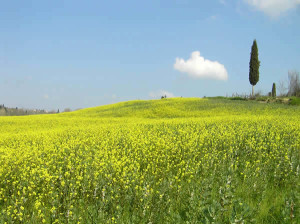This post is also available in:
![]() العربية
العربية ![]() 简体中文
简体中文 ![]() 繁體中文
繁體中文 ![]() Čeština
Čeština ![]() Deutsch
Deutsch ![]() 日本語
日本語 ![]() polski
polski ![]() Русский
Русский ![]() Türkçe
Türkçe
Italy is a peninsula surrounded by the seas, and thanks to the influence of the sea, most of the Italian territory enjoys a Mediterranean climate. The Alpine chain acts as a wall that blocks part of the cold influences from northern Europe. But despite this the geographical conformation of Italy means that the climate of Italy is formed by various microclimates, often originating from the distance from the sea and from the altitude.
A MEDITERRANEAN CLIMATE INFLUENCED BY THE DISTANCE FROM THE SEA AND FROM THE ALTITUDE
What makes the climate of Italy so different is the shape of the Italian peninsula – which includes almost every type of landscape – combined with the shape of the long, narrow and stretched Italian territory between Europe and Africa, and surrounded by the sea on three sides. In the Alpine region the climate is temperate cold as that typical of northern Europe. The Alpine chain has a mountain climate, very cold in winter and with frequent snowfall, while summers are cool but often rainy. In the highest mountains of the Alps at altitudes above 3,000 meters the climate becomes similar to that of the tundra.
In the flat areas of the Po Valley, in the Apennines and along the Adriatic coast up to Molise, the climate becomes humid, rigid in winter and very hot in summer. Along the Po Valley the climate is hot in summer and cold in winter with frequent mists. In the Apennine range, the climate is similar to the Alpine one, although mitigated by the lower altitude.
Along the coasts the climate is instead the typical Mediterranean one, with hot and dry summers and mild winters, the rainfall is usually higher in autumn. Along the Tyrrhenian coast between Liguria, Tuscany, Lazio and Campania the climate is typically Mediterranean with mild winters, hot and dry summers and with rains concentrated mainly in autumn and spring. The south of Italy is characterized by a Mediterranean type climate with very hot and dry summers, in some areas of Sicily and Sardinia the climate approaches the desert or sub-tropical one.
WHEN TO GO TO ITALY
Due to the climatic differences between the various areas of the country, each month of the year can have a good Italian destination to visit. For those visiting the sea areas, the months between June and September are the best. While those who want to dedicate themselves to alpine sports in the Alps and in the Apennines will find the months between December and March excellent.
The months between March and June are excellent for visiting the major art cities of the country, but also the months of September and October. In general, the period from March to October is the one with the best weather and milder temperatures on the whole peninsula. In the extreme southern regions even winter can be pleasant.
However, the best time to visit Italy is between April and June, when the climate and temperatures are mild all over. In this period the countryside in bloom adds fantastic sceneries, so that it is possible to visit the cities and enjoy the mild climate at the same time.
This post is also available in:
![]() العربية
العربية ![]() 简体中文
简体中文 ![]() 繁體中文
繁體中文 ![]() Čeština
Čeština ![]() Deutsch
Deutsch ![]() 日本語
日本語 ![]() polski
polski ![]() Русский
Русский ![]() Türkçe
Türkçe
 Travel Guide Travel Guide to the countries of the world
Travel Guide Travel Guide to the countries of the world





















